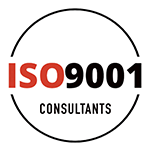In a constantly evolving business landscape, organisations are frequently challenged by the necessity to adapt, innovate, and streamline their processes. Companies eager to maintain relevancy and thrive in today’s competitive environment should consider implementing the ISO 9001 Quality Management System (QMS). By embracing this globally recognised standard, organisations can foster operational efficiency, improve customer satisfaction, and bolster their market position. In this article, we will delve into the fundamentals of ISO 9001, its implementation process, and the benefits it offers to businesses across Australia.
ISO 9001 is a robust framework that outlines best practices for managing and ensuring business excellence through a process-driven approach. This standard focuses on optimising business processes, enhancing efficiency, and promoting continual improvement. As a result, organisations can deliver superior products and services that consistently meet customer requirements and improve overall satisfaction. Importantly, ISO 9001 is suitable for businesses of all sizes and sectors, underscoring its flexibility and relevance in a myriad of industries.
By adopting the ISO 9001 QMS, organisations can attain a plethora of benefits. Firstly, the standard helps streamline operations, hone performance, and achieve greater cost-effectiveness. By identifying inefficiencies and eliminating unnecessary processes, organisations can experience notable savings and increased profits. Secondly, implementing ISO 9001 improves customer satisfaction – a crucial determinant of business success. By delivering high-quality products and services, companies can foster customer loyalty and positive word-of-mouth, leading to an enhanced market position.
Besides operational and customer-related advantages, ISO 9001 certification also serves as a competitive differentiator. Showcasing your commitment to quality and consistency, the certification can propel your business ahead of the competition, opening up new opportunities for growth and success. Moreover, ISO 9001 QMS can provide a solid foundation for regulatory compliance, ensuring your organisation meets the required industry standards.
Developing and implementing a QMS that adheres to ISO 9001 may appear challenging and time-consuming, but the long-term benefits and business excellence achieved make it a worthwhile pursuit. By embarking on this journey with the guidance of skilled professionals, like our team at ISO 9001 Consultants, your business can confidently navigate the complex world of quality management.
Understanding the Core Principles of ISO 9001
Before delving into the specifics of implementing ISO 9001, it’s essential to grasp the underlying principles guiding this comprehensive QMS. The critical concepts shaping ISO 9001 are:
- Customer Focus: Ensuring customer satisfaction by understanding and addressing their needs and consistently delivering high-quality products and services.
- Leadership: Establishing a vision and direction for the organisation while creating a suitable environment for achieving objectives.
- Engagement of People: Involving and empowering employees to contribute effectively towards the goals of the organisation.
- Process Approach: Managing business operations as interconnected components, employing a systematic approach to identify efficiency-enhancing opportunities.
- Continual Improvement: Pursuing excellence by constantly identifying, analysing, and resolving inefficiencies in processes and systems.
- Evidence-based Decision Making: Employing data-driven methodologies to facilitate enhanced decision-making processes.
- Relationship Management: Developing long-lasting, mutually beneficial partnerships with suppliers and stakeholders to create value.
Conducting a Gap Analysis – Identifying Immediate Opportunities for Improvement
As the initial step in implementing ISO 9001, a gap analysis is crucial to establish a comprehensive understanding of your organisation’s current state of quality management. This review involves assessing existing systems, processes, and policies to determine their alignment with ISO 9001 requirements. Identifying existing deficiencies will help provide valuable insights into areas that need immediate focus, laying the groundwork for a successful ISO 9001 implementation.
Developing a Quality Policy and Quality Objectives – Setting the Tone for Excellence
Following the gap analysis, the organisation must trace a clear path forward by defining a quality policy and formulating concrete objectives. The quality policy is a statement outlining an organisation’s commitment to quality and continual improvement. This policy should be concise, communicate effectively to all stakeholders, and align with your strategic vision. In tandem, establishing quality objectives is vital to quantify and measure the organisation’s desired performance improvements, ensuring a strong foundation for the QMS.
Implementing a Process-based Approach – Streamlining Business Operations
An indispensable aspect of the ISO 9001 QMS is the implementation of a process-driven approach to managing business operations. This approach requires you to view your organisation as an interconnected network of processes that, when combined, produce desired outputs. By mapping out these processes, determining their interactions, and understanding their inputs and outputs, you can identify bottlenecks and inefficiencies that hinder overall performance. Consequently, you can optimise these processes, ensuring their alignment with your quality objectives and standards.
Documentation and Record Keeping – Maintaining the Accountability Framework
Proper documentation and record-keeping is vital for demonstrating adherence to ISO 9001 requirements, and it forms an integral component of your QMS. Organisations must maintain comprehensive documentation of their policies, processes, and procedures, outlining their commitment to quality management and recording instances of compliance. Effective record-keeping and document control provides accountability, facilitates continuous improvement efforts, and ensures your organisation’s capability to produce consistent, high-quality products and services.
Internal Audits, Management Reviews, and Continual Improvement – Striving for Excellence
The journey towards business excellence doesn’t end with the implementation of ISO 9001’s fundamental requirements. Your organisation must commit to ongoing monitoring, measurement, analysis, and assessment of its QMS to maintain effectiveness and work towards continual improvement.
Internal audits and management reviews are indispensable in achieving this goal. Conducting periodic audits ensures alignment with ISO 9001 requirements and validates the robustness of your quality management system. In parallel, management reviews provide top-level oversight and enable informed decision-making, emphasising areas requiring attention and improvement.
Seize the Opportunity for Business Excellence with ISO 9001
ISO 9001 is more than just a QMS; it’s a strategic roadmap for business excellence through enhanced efficiency, customer satisfaction, and continuous improvement. By embracing this internationally recognised standard, organisations can unlock new growth opportunities and position themselves as industry leaders.
Are you ready to embark on your path to ISO 9001 certification and redefine success? Look no further than ISO 9001 Consultants for expert guidance and assistance. Our team is committed to helping you shape your organization for excellence and achieve ISO 9001 certification. Contact ISO 9001 Consultants today and start your journey towards success.








Users Comments
Get a
Quote